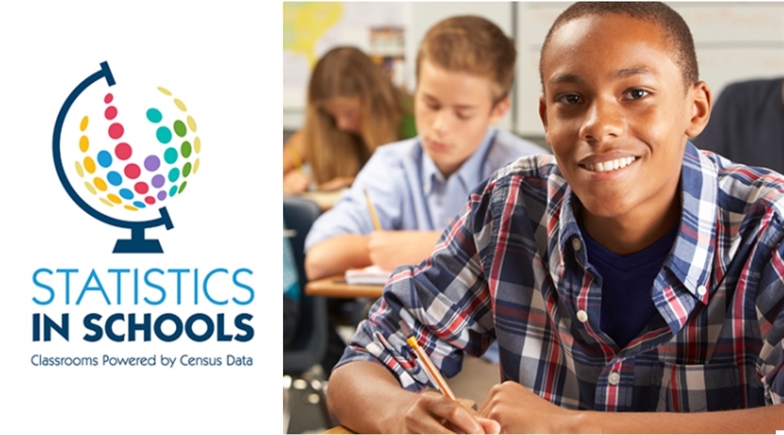This article supports the following characteristics from The Successful Middle School: This We Believe:
Curriculum is challenging, exploratory, integrative, and diverse.
Instruction fosters learning that is active, purposeful, and democratic.
In today’s data-driven world, we have the option to check the weather, stocks, or even the news at the touch of a button, but we don’t always make the correlation between current events and the data behind them. Statistical literacy is an important skill students need to prepare for future learning and careers. You can help your students gain this invaluable skill by using free resources from the U.S. Census Bureau’s Statistics in Schools (SIS) program.
The SIS program includes more than 150 free activities and resources for grades K through 12 that can help boost students’ statistical literacy in a variety of subjects like history/social studies, geography, English, sociology and math. SIS activities can also help students make the connection between data and what’s happening in the news such as the presidential inauguration, the release of 2020 Census population numbers, Black History Month, or other national days.
January: Voting Trends in America
Our history activity, Voting Trends in America, 1964-2014, focuses on U.S. voting trends. Students will analyze bar and line graphs that show the percentages of people by race, age, sex, region, and education, who voted in elections between 1964 and 2014. At the end of the lesson, they’ll be able to use data to respond to the question “Who votes in American elections?”
February: Black History Month
Another history activity, Examining Changes in Data – African Americans’ Education Levels Through the Years, lets students compare, analyze, and interpret 1850 and 1880 census data on the education levels of African-Americans before the Civil War and post-Reconstruction. Students will also discuss how historical events can affect data and be able to write an essay that explains their Findings.
Each lesson comes equipped with both a student and teacher version that has easy-to-follow instructions to supplement your existing lesson plans. SIS also has fun facts and five-minute warm-up activities that tie statistics to holidays like Valentine’s Day, where students can learn what states produced the most chocolate, the history behind the observance, and population stats on the cities and towns with the “loveliest” names.
These materials help demonstrate the value of data and can be customized with local data so students can understand how what they’re learning in school applies to their lives and keep them engaged in the lessons whether they’re learning in-person or virtually. Explore more teacher-created, standards-aligned, classroom-ready activities at www.census.gov/schools.
Kimberley Glascoe is a marketing specialist with the U.S. Census Bureau’s Statistics in Schools program.
Published in AMLE Focus on the Middle, January 2021.
